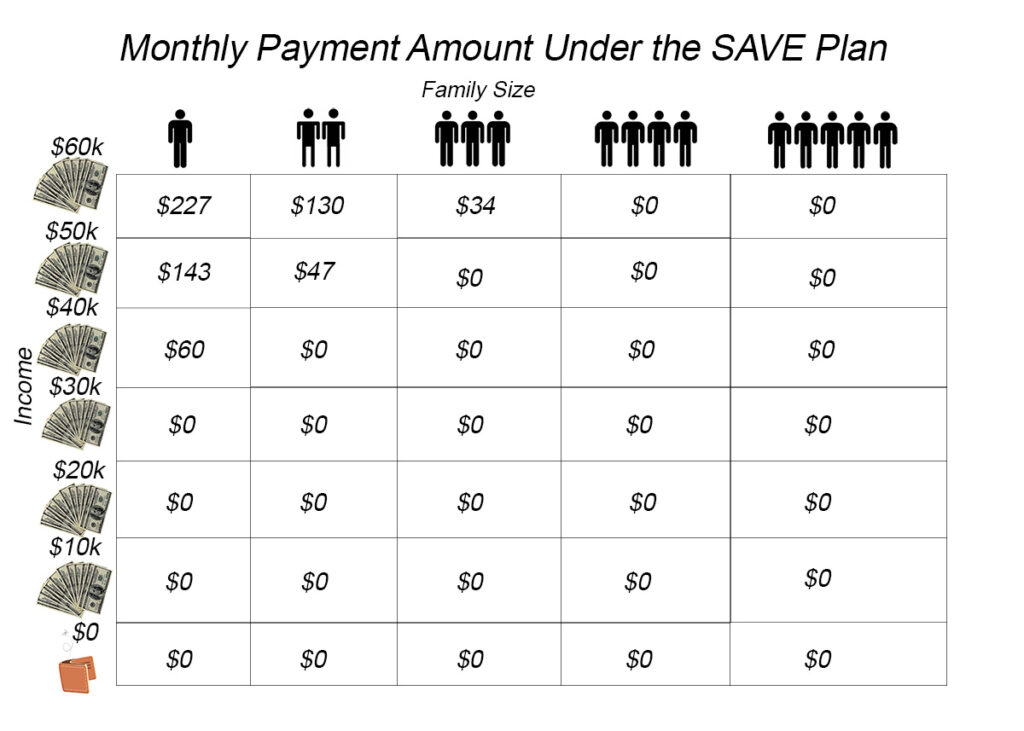The sobering reality of student debt

The U.S. Department of Education ended the interest-free status on federal student loans on Oct. 1, signaling the end of a pandemic-induced reprieve.
The interest rate, which had been set to 0% during the height of the COVID-19 crisis, has now reverted to its pre-pandemic rates, according to the Federal Student Aid website.
Interest rates from loans disbursed between July 2006 and July 2023 for undergraduates typically were between 2% and 6%. The rate for loans disbursed on or after July 2023 is 5.50% for undergraduates, a slight increase compared to the rate from 2019 of 5.05%, according to the website.
As a result, borrowers are witnessing their loan balances swell once again.
“Having a degree doesn’t mean we’re going to have a good paying job,” said Master of Fine Arts graduate student Dulce Perez, who is one of many transitioning back to regular repayments.
“The degrees are so expensive depending where you go, even at UTRGV,” Perez said, referring to the loans borrowed to pay for tuition and fees. “It’s an incredible amount, that’s so unrealistic for most people to pay.”
The Rider asked Roman R. Silva, assistant director of the Financial Aid Office, what resources or programs are available to help students prepare, manage or reduce their student debt burden after graduation.
“Here at UTRGV, we provide free online financial literacy modules to all students so they can have more financial knowledge to make more informed decisions about debt management, budgeting, credit protection and more,” Silva said.
The modules can be completed in 15 to 20 minutes and include quizzes, he said.
“I feel students should learn about how to properly budget,” Silva said. “Once you do enter repayment after your grace period … you will have a new bill. … So, these modules will teach you a bit about debt management.”
UTRGV students interested in the online financial literacy modules can email manageyourloans@utrgv.edu to request additional information.
Students can also visit utrgv.edu/manageyourloans for information regarding loan payments or any related updates by the Financial Aid Office.
Borrowers may also consider the Income Driven Repayment plan. The application is now available on the Federal Student Aid website and includes the option to enroll in the SAVE Plan.
The SAVE plan is “an income-driven repayment plan that calculates payments based on a borrower’s income and family size–not their loan balance–and forgives remaining balances after a certain number of years,”Fig according to a news release from whitehouse.gov.
“Your monthly payment will be based on your income and family size,” Silva said. “So, what this will do is help students who have borrowed loans get a lower monthly payment, which … will be very beneficial for budgeting purposes.”
The concept of student loan forgiveness and income-driven repayment plans have gained traction in recent years.
The Rider asked Salvador Contreras, associate dean for Graduate and Professional Programs and professor of economics, what potential benefits or drawbacks these types of policies would have on the national economy.
“The first thing to remember from any principles of economics class is the saying that there’s no such thing as a free lunch, somebody pays,” Contreras said. “… Somebody’s forgiveness is somebody else’s payment. So, in some sense, if the government forgives your debt … it’s really taxpayers that pay for this type of forgiveness.”
He also said that if education and producing well-qualified graduates is an important investment in the nation’s perceived power, then the bigger question is to ask how much more of a proactive role should the government take in providing these services for free.
“But clearly we’re not in that world and in fact, in most of the world students pay something, even in countries where it’s highly subsidized,” Contreras said. “There’s still some marginal cost that students have to bear to obtain a postsecondary education.”
He told The Rider that loans provided him with the ability to pursue his education and invest in himself. In the end, having taken out loans benefited him personally and professionally.
“We’re hitting the $2 trillion mark on the total student debt,” Contreras said. “Students have taken out a lot of debt, and in itself isn’t good or bad. It provides the opportunity to invest in yourself. … So, the state of debt is large, but in itself is not a terrible thing.”
The average federal student loan debt is $37,338 per borrower, according to the Education Data Initiative website. Private student loan debt averages $54,921 per borrower and the average student borrower takes out over $30,000 in loans to pursue a bachelor’s degree.
Contreras said figuring out how to balance credit loans between banks and the government to help facilitate the exchange of credit and allow more than one segment of society to benefit from a secondary education is the type of policy debate many have.
“We know that people with college degrees are far more likely to be employed, far more likely to earn more money, far more likely to earn more over their lifetime than people who don’t,” he said. “So, then, we don’t just want to have one segment of society benefit from this sort of activity.
“But then the other question is if we want to have these great universities, how are we going to pay for these sorts of services that it entails?”
The Rider asked Contreras what the broader economic implication of the mounting student debt is and how it could affect the nation’s economy if students are not able to pay their loans.
“So, if students do not pay their loans, the U.S. government is on the hook,” he said. “You can’t just wipe out your debt like in bankruptcy, for example. These sorts of loans follow you forever. … So, there’s potential if this gets out of control. … It will have a negative impact on economic activity.
“ … In servicing this particular program, [the government] is not able to invest in other things, like security or national defense or other priorities, that the nation might think are important.”





